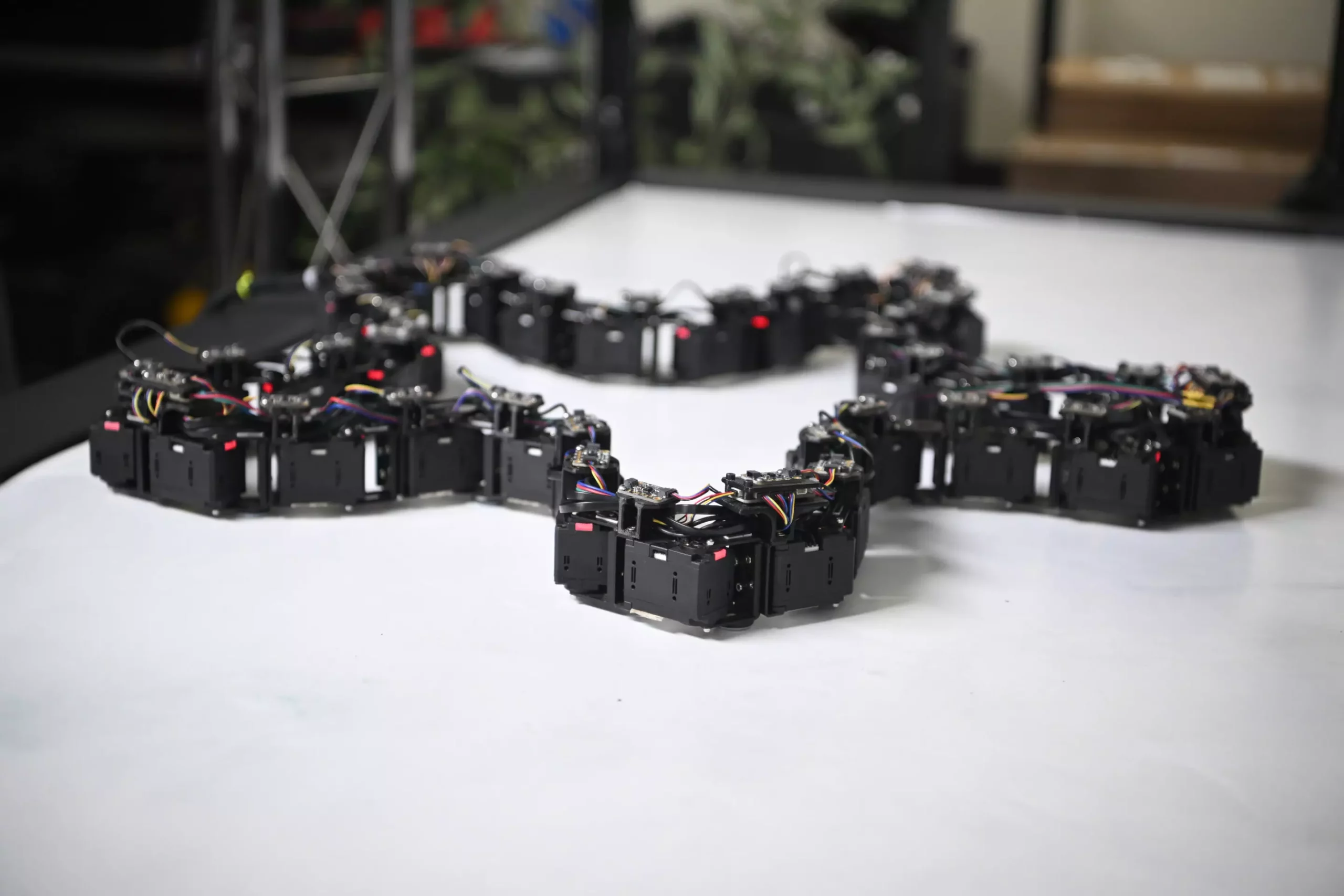The landscape of robotics is undergoing a transformation, driven by innovative approaches that challenge traditional paradigms. At the forefront of this revolution is a project from West Virginia University (WVU), which introduces a novel type of robot termed “Loopy.” This multicellular robot, designed as a ring of interconnected cells, aims to redefine robotic autonomy by enabling the robot to evolve and adapt its structure independently, a concept significantly distinct from conventional robotic designs.
Loopy represents an ambitious leap toward what researchers refer to as “swarm robotics.” Instead of relegating the robot to a passive role where human engineers dictate every aspect, Loopy empowers each of its 36 individual cells to make decisions based on environmental stimuli. This change parallels phenomena observed in nature, such as the behavior of ant colonies or the growth patterns of tree roots, which exhibit remarkable flexibility and adaptability even in the face of uncertainty. By allowing the cells to respond interactively rather than passively, the team led by Yu Gu seeks to explore whether such decentralized approaches yield behaviors that are not just pre-defined but can indeed adapt dynamically to the surroundings.
Gu identifies this paradigm shift as a necessary reset for robotics. Traditional systems are often described as “top-down” entities, where designs are rigid and inflexible. In contrast, Loopy embraces a “bottom-up” philosophy, fusing the operational abilities of each cell with the innate unpredictability of their environment. This arrangement could lead to significant breakthroughs in robotic applications where adaptability is crucial—such as in containment responses to environmental hazards like oil spills or toxic contamination.
The design of Loopy equips each cell with its own movement capabilities and sensory inputs, allowing it to track external factors and its own positioning in real time. The research team has established a controlled environment that serves as a testing ground for Loopy’s capabilities, complete with technology that tracks its movements and analyzes its response to different stimuli—such as changes in surface material or the presence of obstacles. This rigorous testing is essential, as it allows researchers to evaluate not only how effectively Loopy circles contamination areas but also how it adapts to unforeseen changes.
One of the most intriguing aspects of the research is Gu’s prediction that the progress regarding Loopy will be nonlinear. Experiments are expected to yield unexpected outcomes, which the research team views not as a setback but as an opportunity for crucial insights. The comparisons between self-organized solutions—emerging from the cooperative responses of the robot cells—and conventional programmed responses will provide valuable data on the efficiency of different approaches to robotic design.
Exploring the Implications of Swarm Robotics
The outcomes of these explorations go beyond the mere functionality of the robot; they delve into philosophical territories, where the interactions between humans, robots, and their environment create a symbiotic relationship akin to natural ecosystems. Drawing parallels to practices in permaculture, Gu emphasizes the importance of collaboration among all three entities—humans, robots, and the environment—in crafting truly adaptive systems.
Gu’s research is also influenced by biological models, particularly those observed in plants. An intriguing component of this concept is how plants use chemical signals to coordinate collective behavior, thus enhancing growth in response to environmental changes. This notion of decentralized communication among cells is fundamental to Loopy’s operational ethos, exemplifying how nature’s complex systems can inform technological advancements.
The research on Loopy marks a significant shift in how robots can be conceived and utilized. The blending of a robot’s physical structure, its behaviors, and its environmental interactions blurs the boundaries that have traditionally separated these components. This convergence heralds a future where robots can operate more autonomously, learning and adapting to their surroundings without heavy reliance on human oversight.
Ultimately, as Gu and his team continue their investigations into Loopy, they aim not only to explore its technical capabilities but also to unlock new avenues for practical applications. From adaptive systems in environmental protection to interactive displays in art, the potential uses for a versatile robot like Loopy are as diverse as they are promising. Embracing this new paradigm of robotics may very well lead us to a future enriched by machines that better understand and react to the dynamism of the world around them. As the line between robotics and biology increasingly blurs, we stand on the brink of a new era in technology, where our machines become more reflective of the intricate, adaptive processes found in nature itself.


Leave a Reply